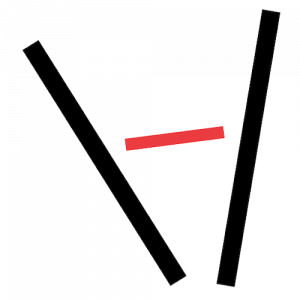Abstract
Design has been part of our systems since ages and across the generations—in manual tools for use by our hands, in the machines, in print and media, and now in technology. We had design engineers designing our cars one hundred years ago. We always had textile designers, and cutlery designers.
Do we need to question the state of something that has been a default ever since we can imagine? Do we talk about the state of chair design—for the chair that we use for our work, or the state of cutlery design while having food?
Think of a small business anywhere in the world who makes water bottles—can they manufacture bottles without thinking of its usability for the users? Can an architect plan designing a school or park, without thinking like a designer?
When you talk about the modern cities and the streets where kids cannot play—this is not only an administration failure or policy failure—this is a design failure.
It sounds funny that the organizations seek design maturity in the design systems or in design operations whereas the design fails them in the sign up forms and in the dashboards. We see it all the time. Every single day.
We need to position our design judgment better. For being a part of the design food chain—as producers and as consumers. We just need to design with common sense—our collective common sense.

The State of Design: An Unnecessary Topic to Write About
To begin with, I find it unnecessary to talk about the state of design. I will use this article as an opportunity to share why I feel so.
Design has been a part of our systems since ages and across the generations—in manual tools for use by our hands, machines, in print, and now in technology. We had design engineers designing our cars one hundred years ago. We always had textile designers, and cutlery designers.
Do we need to question the state of something that has been a default ever since we can imagine? Do we talk about the state of chair design—for the chair that we use for our work, or the state of cutlery design while having food?
Whenever we saw a significant shift in how we design or use technology whether it was for responsive design, accessibility, voice, or for feeding the modern training models, we were excited to ring the bell for the state of design for the design maturity and design ROI methods and frameworks. We must remember that for the consumers, the Winamp players and the MS SharePoint 2003 too were an experience to remember.
Design was always around.
We tend to see the state of design in the technology lens—AI, future-friendly content, unknown devices, voice interactions, intelligence in personalization, and for more context in the user experience.
The design principles, practices and its applications change with the changing consumer behavior and for the evolving ergonomics.
Design guides the architecture—the information architecture practice makes these two support each other.
Design facilitates thinking (Oh not design thinking, please). Design builds confidence (and shatters it equally effectively). Design enables wayfinding (provided we want to navigate). Design fosters research and it helps in studying humans and human behavior.
Design answers. When design questions, it is prepared to discuss.
Design builds conversations and these conversations build communities.
How does it matter whether the app user is a college student in Mexico, or an astronaut in New Zealand, or a chef in Durban, or a doctor in Paris, or a farmer in Vienna? How does it matter whether they want to use an app to pay college fees, or to cancel a doctor appointment, or to buy a new yoga mat? We cannot take common sense and human judgment out of the design equations.
Far too many modern digital products are poorly designed—we see it all the time. Every single day.
It surprises me that even in the year 2024, a majority of technology leaders worldwide have a poor understanding of the role of design (tweet).
The biggest trap many consumer app founders are falling into right now is endless obsession over tiny design details. It paralyzes your product from progressing.
— Alex Kehr (@alexkehr) April 9, 2024
No user cares how beautiful your app is.
And they set wrong examples for their network and the community. Just as a child notices something when their parents throw the plastic bottle in the lake.
Think of a small business anywhere in the world who makes water bottles—can they manufacture bottles without thinking of its usability for the users? Can an architect plan designing a school or park, without thinking like a designer?
If I cannot increase the volume of my device while I am in an online call, this is first a design failure and then an engineering failure.
If I hurt my thumb while using a Jaguar tap, it is first a design failure and then a manufacturing failure (related tweet).
Even war is a design failure in many ways—when we think of complex systems that may have led to the war whether these are in the historical context, politics, internal administration, international relations, segmentation of societies and humankind—these point to a breakdown in the communication systems somewhere and which is not disconnected from how those broken systems were designed and how these could have designed.
When you talk about the modern cities and the streets where kids cannot play—this is not only an administration failure or policy failure—this is a design failure.
Every individual in my in-person network who is going out for a haircut, or for buying fruits just needs a phone to make the payment. Hundreds of micro-interactions via QR codes by a single vendor in a day might help us rank higher in the digital maturity but they do not care to know how it feeds and fuels hundreds of algorithms worldwide and how a cashless society is a step backwards for our goals towards an inclusive and diverse social system. If technology cannot build this education—this is a design failure.
When the carpenters were designing chairs for a family at home or in their garden, they were also building the capacity to design the chairs for the unknown use cases. When they saw the possible demand for office chairs in their town, they built on their experience and it shows in the evolution of chair design. When we use forks while having food, do we question the state of cutlery design because the dishes are evolving, the dining experience is changing, and even our fingers' ergonomics are also changing?
To see how design can make better and a more positive contribution to our collective life for the collective well-being, inclusively, we need design at the meta-systems level first. We need to build bridges to set up the historical context to how we have been evolving as makers and as consumers and how how everything is designed and how it evolved have been a default.
Design is like 3.141592653589793238462643383279502884197...—a constant. The difference is that it sits on the rational side of Pi. So that we can see. We can see around and learn how people live their life—in what constraints—we are designing a lot of things that we can actually see in their life.
For a minute, just observe the device and the app that you are using to read this article now. Have we not laughed at these browsers for shattering our confidence? Have we not laughed at those printers if you are reading this article on a physical paper?
The talks on design maturity, design ROI, design systems, design operations, design leadership—these serve merely as a salad on the table. The main course is lost somewhere in Figma, overhyped stakeholders, discovery synthesis that is shelved now, and in the underrated and dusted micro-systems that rarely get a chance to see the design light in real sense. And this salad shows in our digestion system—we consume what we cultivate.
It sounds ridiculous when teams talk about adopting design thinking. Is the absence of design thinking possible? For example in a fine dining restaurant kitchen, do the chefs and the staff talk about butter thinking, or dough thinking, or olives thinking?
There is a silver lining designed in a mild yellow color shadow that passes through the vision of a few organizations including Polycene, AndEnd, Stewarding Loss, Dark Matter Labs, Helsinki Design Lab (closed now but their work is a forever great reference) Slow Design, Demos Helsinki, Hugh Dubberly, and a few more. There have been a few amazing conferences and communities worldwide who serve to take the practice forward. But these are too few. We do not have enough references to build our bets. We lack the confidence to admit that we lack confidence.
We have been too slow.
We spoke about collaboration and alignment in 2014, in 2019, and we talk about these in 2024 too.
If we say that design is complicated now, my question is—"compared to what?".
We think that we are learning but we are losing our capacity faster than the speed of our learning—we work like the capacitor of an ageing fan—responding positively to the action on its switch but it does not help the occupants.
All the teams reporting to UX Research will not help. Sorry. Hiring content designers will not help. Sorry. Positioning ourselves investing in evidence-based design have not helped many—we see tons of examples of design failure in all such organizations.
As long as there is a struggle of versus—production vs maintenance, or profits vs people, or sales vs systems, our investments in innovation will continue to be part of the misplaced hype.
We feel this struggle of feeling high versus feeling a dent in our confidence.
Design has designed us to deny this struggle.
Meanwhile I have just moved from my desk chair to the terrace chair while writing this article, and I am looking at the dessert fork in my plate on the table. A plate and my set of UNO cards—Skip, Reverse, Wild—a lot like our work. Any guesses for what could be in my plate?
We need to position our design judgment better. For being a part of the design food chain—as producers and as consumers.
Design has been the default. It will be. We just need to design with common sense.
(Thanks to Dene Gabaldon (their LinkedIn) and Cyd Harrell (their LinkedIn) for their quick review of my post.)
Written by Independent, Vinish Garg.
About the author
Vinish Garg is an independent consultant who works with technology teams worldwide on the intersection of product management, UX and design leadership, content and positioning leadership, and system thinking. Vinish enjoys working with teams to establish the standards and principles of how we work, and how our standards translate into customer onboarding design, the organization growth levers, the product and brand positioning, and how our collective intelligence builds sustainable systems.
Vinish owns an international UX conference in Chandigarh since 2018—https://www.outcomeconf.com/. He is a lecturer in Graz University, Austria teaching content design (and content's intersection with UX, products, and customer experience) in their masters program.

Links
- Website: https://www.vinishgarg.com/
- Substack: https://vinishgarg.substack.com/
- LinkedIn: https://www.linkedin.com/in/vinishgarg/
- Twitter: https://twitter.com/vingar
- Mastadon: https://mastodon.social/@vingar
- Conference: https://www.outcomeconf.com/


















Discussion